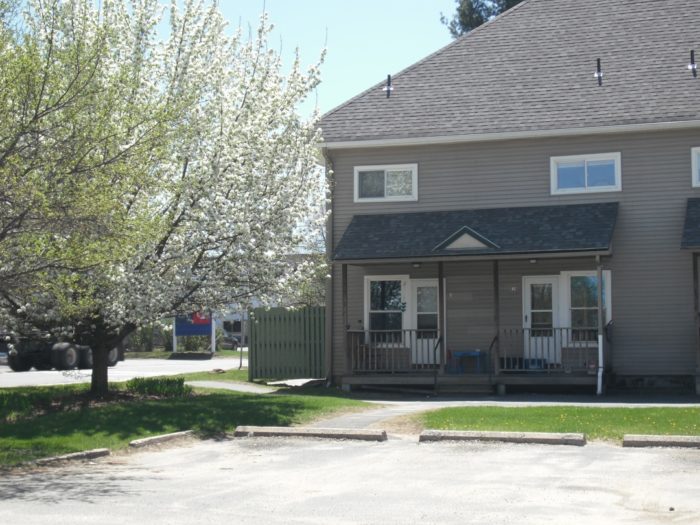
Image Credit: Image #1: Rural Edge
Low-income Americans have a hard time finding housing. When families learn that market-rate housing is unaffordable, they often seek help from a variety of government agencies — some local, some state, and some federal. Unfortunately, government efforts to provide housing assistance to low-income families are unable to fully meet the need.
A full examination of all of the problems related to low-income housing in the U.S. is beyond the scope of a single article, so I won’t attempt it. Instead, I’ll share my own experience working with a nonprofit developer of low-income housing, and I’ll summarize what I’ve learned from personal experience and research.
Cobbling together project funding
For four years in the mid-1990s, I worked as a project manager for Northern Community Housing Corporation (NCHC), a small nonprofit developer in St. Johnsbury, Vermont, with five employees. (The agency no longer exists.)
If I had to characterize the nature of the agency’s employees, I would say (at the risk of generalization) that we were all well-meaning liberals concerned with issues of social justice. We all believed that every low-income American deserves access to decent, affordable housing.
NCHC used three main sources of funding — community development block grants, funds from low-income housing tax credits, and appropriations from the Vermont Housing and Conservation Board (VHCB) — to put together its development projects. Project funding was complicated, requiring many hours of work to secure.
Using these funds, NCHC purchased old multi-unit apartment buildings in St. Johnsbury, Lyndonville, and surrounding communities. Most were wood-framed buildings, at least 100 years old, with between three and five apartments per building.
We had an architect on staff, Ben Nickerson, who created plans and specs to rehab these older buildings. We invited contractors to bid on these rehab projects. Over a period of months,…
Weekly Newsletter
Get building science and energy efficiency advice, plus special offers, in your inbox.

This article is only available to GBA Prime Members
Sign up for a free trial and get instant access to this article as well as GBA’s complete library of premium articles and construction details.
Start Free TrialAlready a member? Log in





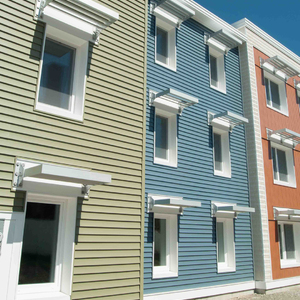
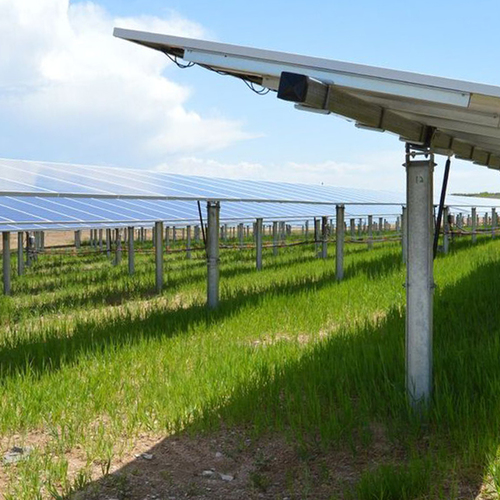
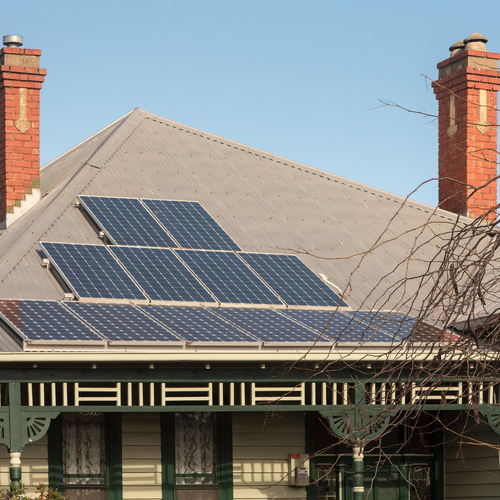
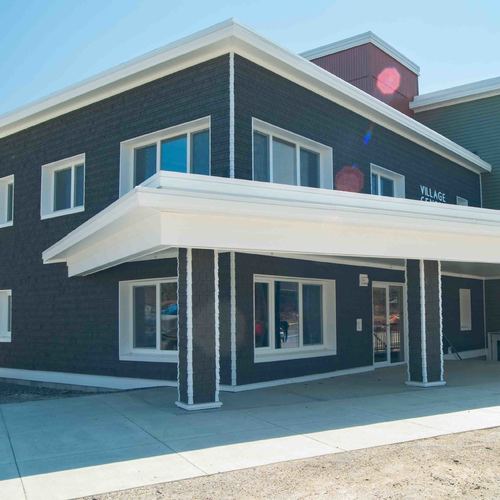






11 Comments
Will the Internet come to the rescue?
Very insightful article Martin, thanks for putting it together. Don't understand why you made it GBAPrime though. It seems like it should be a read for everyone.
The first place I went to see who might be the biggest proponent of the interest deduction was the National Association of Realtors website, https://www.nar.realtor/ It only takes a few seconds of searching there to see that they feel it's absolutely essential.
Given the above stance, my initial thought is that abolishing the interest deduction is a Sisyphean challenge; it will never happen with such a powerful lobby working to preserve it. However, you know taxi drivers in NYC once thought that having a medallion was tantamount to owning treasure. Uber, Lyft, and other Internet based ride sharing businesses quickly destroyed that model. So you may get your way as the Internet further decentralizes power in the real estate industry too.
Great post, jibes with my experience
Martin, thanks for shining light on this critically important issue in housing.
I've wondered much the same thing--how can we have the knowledge, materials, so many people looking for useful work, the money exists, and yet somehow we don't solve this most basic problem. My experiences, though different from yours, have led me to most of the same conclusions.
To my mind one of the central cogs in this whole mess has to do with the power of capital and the expectations that investors have for profit. It took me a while to realize that private investment in healthy affordable housing is an incredible stretch mainly because investors come to the table expecting usurious returns. While the poor run like mad to stand still and keep up with the rent and utilities, the building owner insists on double their money in ten years or less, or else they take their money somewhere else.
We could also talk about how funding for energy conservation and renewables, as with the mortgage interest deduction, disproportionately benefits middle and upper class home owners and not those who need it most. And how the housing crisis of 2008 allowed big banks to legalize theft-- by "selling" houses to people who couldn't afford them, jacking up fees, and then generating fraudulent paperwork to seize the houses, knowing most victims would be unable to afford legal help. (David Deyen's book "Chain of Title" is a pretty eye-opening account of how big money talked and ultimately walked.)
One final digression: I remember reading somewhere that one reason that the dissolution of the Soviet Union was relatively non-violent probably had to do with a long tradition of public housing. People faced an uncertain economic future, but they didn't have to fear that they might suddenly be homeless.
Some national soul-searching on this subject of affordable housing would be good. Maybe after we get this health care thing worked out....
Response to Andrew Bater (Comment #1)
Andrew,
I agree with you that the power of lobbyists has a malign effect on politics in the U.S. The solution to this problem is campaign finance reform. For progressives, the work is never-ending.
Response to Bennett Sandler (Comment #2)
Bennett,
I agree that most of the benefit of PV incentives goes to upper-income Americans. There is, indeed, a pattern here.
PV subsidy goes to middle income, mortgage subsidy is a vestige.
While it's true that lower income people are still under-represented amongst solar owners, the residential PV subsidy vs. income isn't as clear cut as it might seem. It's not nearly as regressive as some critics like to paint it (why would anybody believe the Kochs' propagandists on this one?). The bulk of the subsidy is going to middle-income households, not the wealthy. This has been covered multiple times by Greentech Media, most recently this past April:
https://www.greentechmedia.com/squared/read/how-wealthy-are-residential-solar-customers (<behind paywall, sorry)
https://pv-magazine-usa.com/2017/04/19/report-middle-income-homeowners-make-up-70-of-solar-customers-with-3-critical-charts/
https://www.pv-tech.org/news/us-residential-solar-belongs-to-the-rich
On the mortgage interest deduction...
A hundred years ago when the US income tax was a young most homes were paid for in cash, and ALL interest payments to lenders were deductible. That was a policy driven by business stakeholders with high debt/revenue ratios, primarily farmers & small businesses. Home mortgages were included, but were rare prior to the late 1920s. When consumer financial products such as credit cards were developed, that interest too was deductible.
The Reagan era tax reforms ~30-35 years ago did away with most interest deductions, but the mortgage interest deduction proved too hot to handle by reformers since it would putting financial stress on too many middle & upper income people (and the mortgage lenders who were making out well on the subsidy.)
The subsidy encourages people in higher tax brackets to buy "too much house", and in the end is a regressive policy. Getting rid of it won't end the housing market as we know it today, but it may temporarily curb the number of McMansions being built.
Property taxes
In the Chicago land area where I live property taxes have a huge impact on the affordability of housing. Typically we pay around 3% of the value of our homes in property taxes every year to the government.
In some of the poorer communities around Chicago they are paying 10% of the value of their homes in property taxes! In other words they could own their homes mortgage free within 10 years for what they pay in property taxes. In just 12 years of paying my current tax bill it will equal what I paid for my home! It doesn't just effect homeowners but renters and business owners as well which impacts the job market.
I guess if we are honest it isn't just greedy bankers, developers and builders that prevent people from owning a home but the government plays an even greater role.
Hopefully at some point in time you are able to own your home out right but the property tax bill just keeps increasing. For many of us our property tax bill grows larger then our mortgage ever was.
It is interesting that the single largest group moving out of Chicago is the African American population. The city hasn't proven to be a great place to live unless you are a young upper class professional.
Property taxes
At least it's easy to see where your property taxes go. Here in my little Maine town, about 2/3 goes to schools, almost all of the rest to roads ( mostly plowing snow), the volunteer fire department, and to the county ( mostly for sheriff, since we don't have local police).
Everyone complains about property taxes, but I think I get pretty good value for about $3,000 per year, even though I don't have kids in school.
GREAT article!
I wish we could have an ongoing series of articles for more information on affordable housing.
Home ownership (not just reasonable rentals) seems important. I grew up in a working class neighborhood right next to a housing project. The 1950's 2 bedroom homes on 50'x100' lots were owner-occupied, the townhouse style housing project were all renters. About a third of those I know from the owned homes became quite successful (surprising actually), and a third went to jail or prison. I don't know any friends from the project rentals who became very successful. Same mixed race, mixed ethnic, Catholic/Protestant/non-religious backgrounds in owned and housing project homes. We went to the same schools (although some to Catholic schools). We had school-age friends in both places (but not before school age). Often families in the housing project had more kids/family, another difference.
Although this is purely anecdotal, seems to me that home ownership (and maybe fewer kids) is related to more favorable success outcomes of kids. Therefore, in addition to providing decent affordable housing and a safer low-income neighborhood, IMHO it would be great to get affordable housing renters to be getting some housing ownership over the decades, just like cheaper starter home homeowners. It might reduce some maintenance costs if renters could get some credit for maintenance labor for upkeep of subsidized housing, rather than always hire outsiders to do the work.
Personally I'm interested in designing high performance, lower cost, modest homes. The middle class is disappearing and can't afford the luxury or larger high performance homes. IMHO we need more affordable single family home ownership, affordable condos in cities, owner-builder and rent-to-own options, and lower total cost of home ownership (which includes low utility and maintenance costs). I've been an owner-builder, renovator, homeowner, longer-term renter, and landlord at various times, and can sympathize with landlords. But if money is subsidizing rents, I'd like to see some options for renters to get credits toward ownership or some opportunities to do home maintenance jobs. Not just social justice, but growing a sense of ownership and competence in home maintenance.
Workforce housing
A number of years ago they tried to destroy the zoning regulations in the county where I live. They called it workforce housing. Under these changes select developers would be allowed to ignore the restrictions of lot coverage, setbacks, parking allowances, and storm water considerations. It would allow subsidized multi family housing in neighborhoods zoned for single family housing.
I attended meetings where connected builders, developers, and housing activist were working to put these zoning amendments through. The only people missing were the homeowners from the neighborhoods that would be impacted. No one bothered to let them know about the changes that were about to be voted on that would have a huge impact on their neighborhoods.
Once I needed to get a variance for a screen porch I was building that would extend 12" beyond the set back restrictions. In order to get the variance we had to install a sign on the property of the hearing date, take an ad out in the local newspaper, mail dozens of neighboring houses of the request being made and attend a hearing. Contrast that level of transparency to what was being provided to the neighborhoods that would be impacted by workforce housing. A request for a small setback change was required to be done with everyone impacted being notified where huge changes to neighborhoods were being voted on without ANY notification to those being impacted.
Once the map of the impacted areas was leaked to the impacted neighborhoods hundreds of people started showing up to express their concerns. What was interesting was that the loudest most vocal opponents were the teachers and police officers who the housing advocates claimed the workforce housing was for.
The dangers of activist trying to destroy zoning laws is still out there. Now there is push by some activist to allow Washington D.C. to over ride local zoning laws to push their vision into our neighborhoods.
Thank you so much for this.
Martin, I didn't expect such a quick response, nor realize you had so much experience. Two questions.
Since there are two sides to this coin, the other being low income, do you know if any other developed countries have done a better job of reducing the sheer number of people who can't afford market rate housing? This seems like some fundamental measure of a society to me. "What percentage of the population can afford a place to live with out assistance? "
It seems to me there is a huge need for home owner education about capital needs. I've been working with local Habitat affiliates on what they call "Critical Repair" and learned from you article that they are basically helping low income homeowners with capital needs; the most typical being a roof. I'm inspecting these homes to make sure there aren't pressing safety issues (CO, smoke alarms, electrical hazards) or major foundation problems before they put a roof on it, but have felt compelled to provide them with a list of "next most important repairs". I'm realizing a capital needs assessment is what I've felt is missing from these projects. Is there a best way to learn more about doing these assessments?
Response to Andy Kosick
Andy,
You raise several questions. We can seek some answers by looking at two different rates: (a) the homelessness rate and (b) the homeownership rate.
Comparing homelessness rates from country to country is tricky, because different countries have different definitions of homelessness.
According to one source, France has a higher rate of homelessness than the U.S., while Portugal has a much lower rate of homelessness than the U.S. (See the top graph below.)
According to another source with a more complete dataset, many countries have much lower rates of homelessness than the U.S. (See the table reproduced as the second image below). Both sources agree that France has a slightly higher homelessness rate than the U.S., although a great many countries have lower homelessness rates than the U.S., including Chile, Croatia, Denmark, Estonia, Finland, Hungary, Ireland, Italy, Japan, Latvia, Lithuania, Luxembourg, Mexico, Norway, Poland, Portugal, Slovenia, and Spain. Like all international comparisons, the usual caveat applies: "Different countries define homelessness differently, so use caution before reaching conclusions."
According to a third source -- more journalistic than academic -- those seeking to reduce the homelessness rate in the U.S. should look to Japan, Denmark, Singapore, and Canada as models.
I've traveled to many countries, and here is my anecdotal observation: homelessness tends to be associated with urbanization. It's less common in rural areas. (That said, there are exceptions to this rule, notably in Japan and Singapore, where urban homelessness is rare.)
When it comes to homeownership rates, one is immediately struck by the fact that high rates of homeownership aren't correlated with wealth. One list of homeownership rates puts Romania, Singapore, Slovakia, and Cuba at the top of the list. Another list of homeownership rates puts Mauritius, Romania, Singapore, and Macedonia at the top of the list.
Most analysts would agree that a low rate of homelessness is socially desirable. On the other hand, it's far from clear whether a high rate of homeownership is desirable or irrelevant to social stability and happiness.
As you correctly note, homeownership brings burdens as well as benefits. While it can be difficult to come up with the down payment for a home, it's even more difficult to create a plan to replace big-ticket items -- roofs and heating systems -- that inevitably need replacement. Many smart rich people choose to rent.
.
Log in or become a member to post a comment.
Sign up Log in